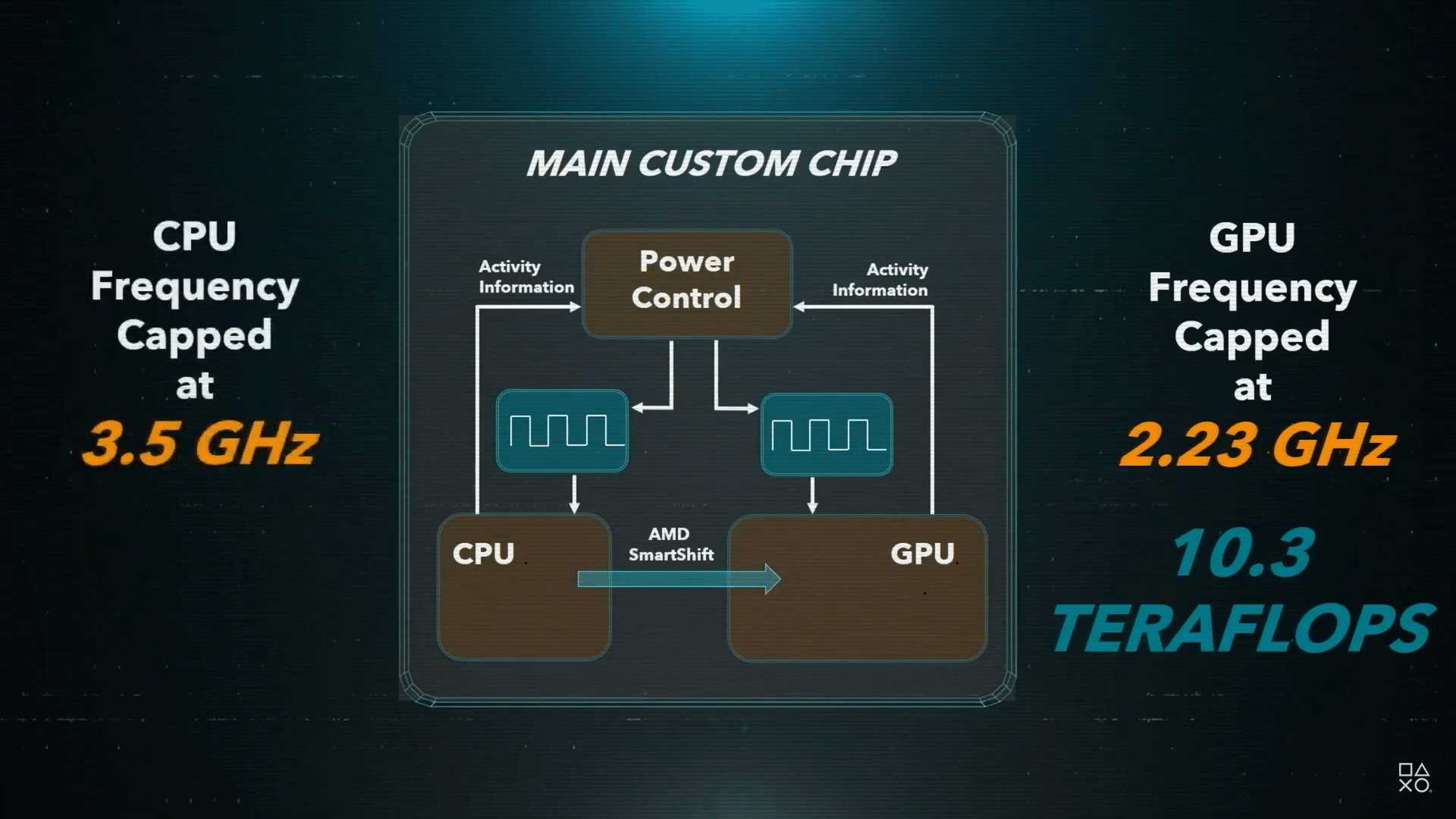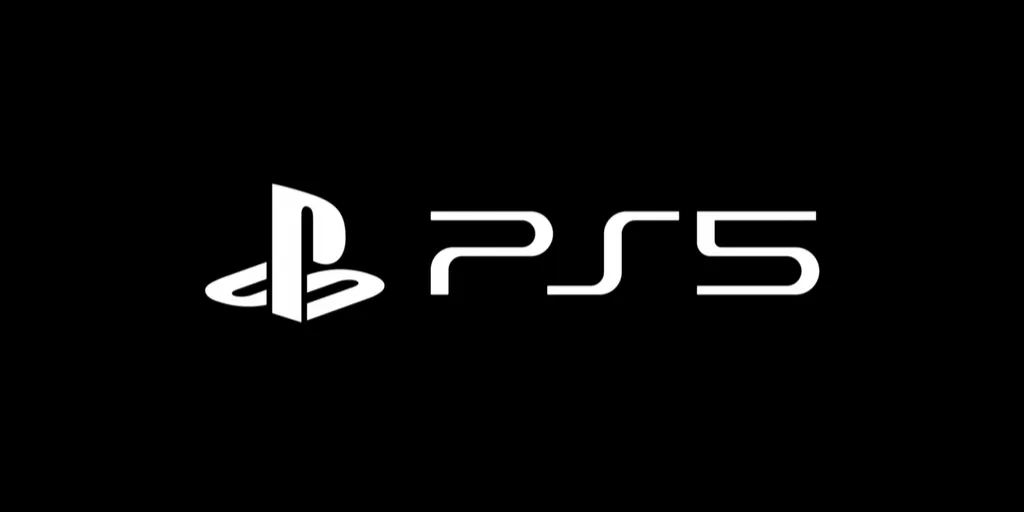[Editor’s Note: This was originally published on March 18th, 2020 and is being republished today to coincide with the PS5 reveal event.]
Sony today revealed the specifications for the PlayStation 5. It will bring high end PC power to console VR, however, the GPU isn’t as powerful as the Xbox Series X.
In April last year, Sony confirmed that the PS5 will support the existing PlayStation VR headset. The company had also revealed that PS5 will run PS4 games- however today it was revealed that not all PS4 titles will be available at launch.
Specifications
The PlayStation 5 is a big leap in performance over the PS4 Pro, and in a completely different league to the base PS4, which launched seven years ago.
| PlayStation 4 | PlayStation 4 Pro | PlayStation 5 | |
|---|---|---|---|
| GPU: | 1.8 TFLOPS (18x GCN2 CUs @ 0.8GHz) | 4.2 TFLOPS (36x GCN2 CUs @ 0.9 GHz) | 10.3 TFLOPS (36x RDNA2 CUs @ max 2.2GHz) |
| CPU: | 28nm 8-core @ 1.6GHz | 16nm 8-core @ 2.1GHz | 7nm 8-core @3.5GHz |
| RAM: | 8GB (176GB/s) | 8GB (218 GB/s) | 16GB (448 GB/s) |
| Storage: | 500GB 5400RPM HDD (0.1 GB/s) | 1TB 5400RPM HDD (0.1 GB/s) | 825GB PCIe 4.0 SSD (8-9 GB/s) |
The GPU is several generations ahead, almost six times as powerful as the PS4. This is due to AMD’s latest RDNA2 architecture, also used in Xbox Series X. Whereas many PC VR games had to have the resolution scaled down on PS4, this probably won’t be the case for the PS5 for at least a few years.
In PC terms, the GPU should perform very similarly to NVIDIA’s RTX 2070 Super.
The CPU clock speed has almost doubled. Developers should be able to utilize this to bring games with detailed physics simulations and more advanced AI to PlayStation VR. Could it be enough to bring over Half-Life: Alyx to PSVR? We hope so.

The CPU and GPU use a variable clock speed system, which allocates frequency between each based on the current workload. While this allows for GPU frequencies never before seen in a console, it also means that developers won’t be able to get maximum performance for both CPU and GPU simultaneously.
Developers also now have a lot more RAM to play with, and the memory bandwidth has roughly doubled. But the most significant improvement in this upcoming console generation is the move from mechanical hard drives to fast solid state drives- an almost 100x increase in storage performance.
Not only will this allow for loading times a fraction as long, but combined with the RAM improvements will enable much more detailed, and larger, open worlds.
New Technology
Of course, devices like consoles are more than just raw specs. New hardware features can also enhance what developers can do with the system:
- Hardware Accelerated Ray Tracing (like NVIDIA RTX, this enables significantly more realistic lighting)
- Tempest Audio Engine supports hundreds of spatialized audio sources
- Geometry Engine provides hardware acceleration for tasks like occlusion culling
- HDMI 2.1 w/ Variable Refresh Rate (up to 120Hz)
Comparing To Xbox Series X
According to Microsoft, Xbox Series X will not support VR at launch, and it isn’t their focus even in the long term.
The Xbox Series X does seem to be a slightly more powerful console overall, however:
| PlayStation 5 | Xbox Series X | |
|---|---|---|
| GPU: | 10.3 TFLOPS (36x RDNA2 CUs @ 2.2GHz max) | 12 TFLOPS (52x RDNA2 CUs @ 1.8GHz) |
| CPU: | 7nm 8-core @3.5GHz | 7nm 8-core @3.6GHz |
| RAM: | 16GB (448 GB/s) | 10GB (560 GB/s) + 6GB (336 GB/s) |
| Storage: | 825GB NVMe SSD (8-9 GB/s) | 1TB PCIe 4.0 SSD (4.8 GB/s) |
| New Features: | Tempest Audio Engine Geometry Engine |
Variable Rate Shading Quick Resume |
It’s possible that the Series X will cost more than the PS5. However, it’s also possible that the performance difference is due to the radically different form factors. Microsoft ditched the standard console design for a PC-like tower, whereas Sony may be looking to maintain roughly the same form factor.
Bridging The Gap To PC
Today, there are essentially three “tiers” of consumer VR graphical fidelity- PC (Rift / SteamVR), console (PSVR), and standalone (Oculus Quest).
The release of the PlayStation 5 should eliminate the gap between PC and console VR, allowing a larger audience to access high fidelity virtual worlds. If the price of the current PlayStation VR headset is reduced, we could see bundles as low as $700- significantly less than it would take to even build an equivalent PC, never mind the cost of the headset.
| PlayStation 4 | Oculus Quest | PlayStation 5 | |
|---|---|---|---|
| GPU: | 1.8 TFLOPS (18x GCN2 CUs @ 0.8GHz) | 0.7 TFLOPS (4x cores @ 0.7 GHz) | 10.3 TFLOPS (36x RDNA2 CUs @ 2.2GHz max) |
| CPU: | 28nm 8-core @ 1.6GHz | 10nm 4-core @2.45GHz | 7nm 8-core @3.5GHz |
| RAM: | 8GB (176 GB/s) | 4GB (30 GB/s) | 16GB (448 GB/s) |
| Storage: | 500GB 5400RPM HDD (0.1 GB/s) | 64GB UFS 2.1 Flash (0.8 GB/s) | 825GB NVMe SSD (8-9 GB/s) |
Of course, Sony is also working on a next generation PlayStation VR headset. While this almost certainly won’t launch alongside the PS5, we’re excited to see what specs that headset can have with the power of the new console.


























